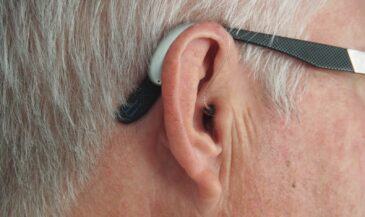By Dr. Christopher Kent
The Good
Two exciting studies were recently published which received extensive play in the popular press. The first relates to significant changes in blood pressure in hypertensive patients receiving atlas adjustments. A Chicagoarea study of 50 individuals with a subluxated atlas and high blood pressure showed that after a onetime specialized chiropractic adjustment, blood pressure decreased significantly. The results are published in the Journal of Human Hypertension. The authors noted that “displacement of C1 can occur without pain and thus, often goes undetected and untreated.” [1,2]
An article on WebMD [3] reported the results of the placebocontrolled study. “This procedure has the effect of not one, but two bloodpressure medications given in combination,” study leader George Bakris, MD, tells WebMD. “And it seems to be adverseevent free. We saw no side effects and no problems,” adds Bakris, director of the University of Chicago hypertension center.
Eight weeks after undergoing the procedure, 25 patients with earlystage high blood pressure had significantly lower blood pressure than 25 similar patients who underwent a sham chiropractic adjustment. Because patients can’t feel the technique, they were unable to tell which group they were in.
Xrays showed that the procedure realigned the atlas vertebra with the spine in the adjusted patients, but not in the shamtreated patients.
Compared to the shamtreated patients, those who got the real procedure saw an average 14 mm Hg greater drop in systolic blood pressure (the top number in a blood pressure count), and an average 8 mm Hg greater drop in diastolic blood pressure (the bottom blood pressure number).
None of the patients took blood pressure medicine during the eightweek study.
“When the statistician brought me the data, I actually didn’t believe it. It was way too good to be true,” Bakris says. “The statistician said, ‘I don’t even believe it.’ But we checked for everything, and there it was.”
A second article reported on spectacular decreases in the utilization of medical services, and their attendant costs, when DCs were used as primary care providers. In an Independent Care Association (IPA) which permitted patients to select a doctor of chiropractic as their primary care physician, clinical and cost utilization based on 70,274 membermonths over a sevenyear period demonstrated decreases of 60.2% inhospital admissions, 59.0% hospital days, 62.0% outpatient surgeries and procedures, and 85% pharmaceutical costs when compared with conventional medicine. [4]
The Bad
About the same time, an article appeared in the Journal of Manual and Manipulative Therapy. [5] It describes chiropractic as “a profession in crisis,” and claims that chiropractors are “not subluxation correctors or primary care physicians.” The author closes by stating that he is ethically bound to defend physical therapy’s scope of practice, including manipulation.
An article in the Chronicle of Higher Education reported on the progress that is being made in implementing the new Doctor of Physical Therapy (DPT) degree. “The American Physical Therapy Association has stated that by 2020, all entrylevel degree programs should be at the doctoral level. The move is well along; 180 of the 210 programs the group accredits are already at the doctoral level, and the rest are at the master’s level.” [6]. Yep. That’s 210 programs. How many schools do we have?
One can go from high school to DPT in fewer than six years. A high school grad in Davenport, Iowa can become a DPT in fiveandahalf years. Prerequisite: One year of high school biology and chemistry. [7] It’s a very attractive deal for a career shopper. No onerous 90hour or BS prerequisite, virtually guaranteed employment upon graduation, medical acceptance, and the option of a direct access private practice. This could all but guarantee the end of chiropractic if we don’t have something to offer other than manipulation and PT for NMS symptoms.
Visit the web site [7] and check out the curriculum. No need to waste your time studying pathology, biochem, or any of those nasty courses DCs need. Of course, if you want to go to chiropractic college, you’ll need 90 hours of preprofessional study including heavy, college level science courses like physics. Some states require a Bachelor’s before starting. This trend is growing. Then you have a rigorous, comprehensive four academic year course to get your DC. After graduation and passing four parts of the National Board exam, you can work for Burger King wages as an associate, or go deeper in debt to open your own office.
How many prospective students will choose to go the DC route, if both professions claim to offer the same services? We must make sure that everyone understands vertebral subluxation, wellness, and our unique approach to unleashing human potential. Or, like the Soviet Union, the chiropractic profession as we know it could die with barely a whimper.
References
1. http://www.eurekalert.org/pub_releases/200703/uocmsca_1031407.php
2. Bakris G, Dickholtz M, Meyer PM, et al: “Atlas vertebra realignment and achievement of arterial pressure goal in hypertensive patients: a pilot study.” Journal of Human Hypertension 2007:16
3. “Study finds special ‘atlas adjustment’ lowers blood pressure.”
4. Sarnat RL, Winterstein J, Cambron JA: “Clinical utilization and cost outcomes from an integrative medicine independent physician association: an additional 3year update.” J Manipulative Physiol Ther 2007;30(4):263269.
5. Huijbregts PA: “Chiropractic legal challenges to the physical therapy scope of practice: anybody else taking the ethical high ground?” The Journal of Manual & Manipulative Therapy, 2007;15(2):6980.
6. “Credential creep.” Chronicle of Higher Education.
http://chronicle.com/weekly/v53/i42/42a01001.htm
7. http://web.sau.edu/pt/admissions.htm






























































































































































